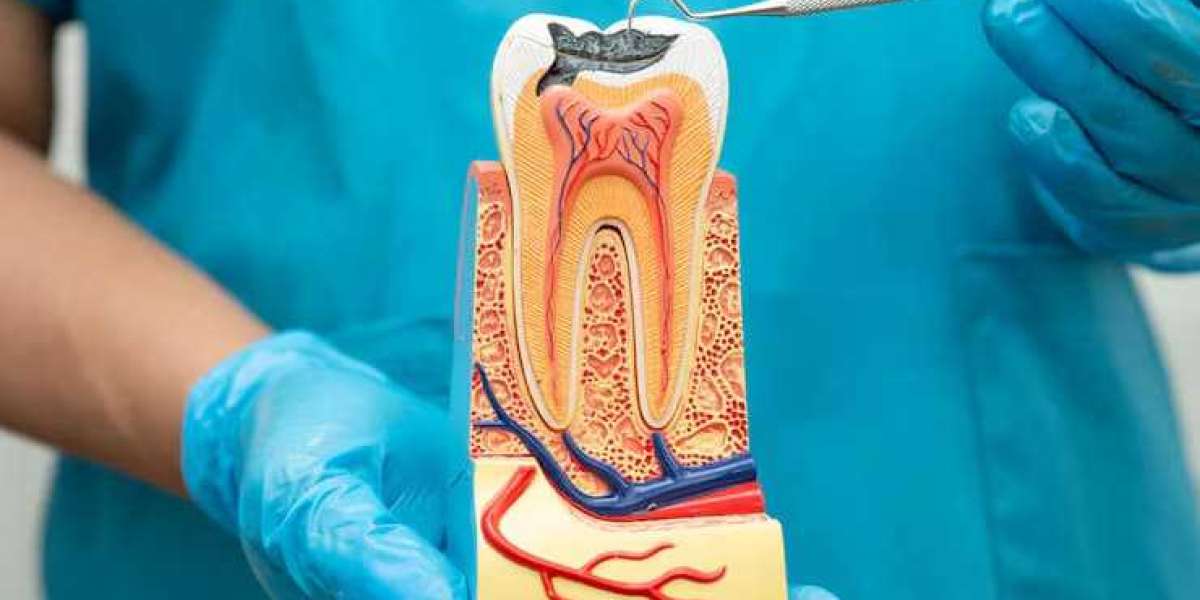When a tooth’s innermost tissues become inflamed or infected, the situation often triggers fear and confusion. From a third-person perspective, the decision to preserve a natural tooth through root canal treatments is a clinical pathway that carries far-reaching advantages biological, functional, financial, and psychological. Rather than defaulting to extraction as a quick fix, many clinicians and patients now favor therapies that retain the natural dentition whenever feasible. This article explores, with depth and precision, the principal benefits of saving a tooth with endodontic care, reviews contemporary trends and evidence, and outlines practical considerations that underscore why preservation often represents the wiser long-term strategy.
Root canal therapy addresses disease within the dental pulp and the complex anatomy of the root canal system. Modern endodontic procedures are not the crude interventions of the past; they are highly refined, minimally invasive approaches that remove infected tissue, disinfect intricate canal spaces, and seal the system to prevent reinfection. Clinicians commonly combine magnification, advanced irrigation protocols, rotary instrumentation, and biocompatible sealers to achieve predictable outcomes. The American Association of Endodontists and numerous peer-reviewed studies report that teeth treated endodontically typically have excellent survival rates figures often cited in the 85–97% range over multi-year follow-ups making a compelling empirical case for preservation. These outcomes are reinforced by continuing innovations such as three-dimensional imaging (CBCT), improved obturation materials, and regenerative endodontic approaches that expand the scope of what can be saved.
Preserving Natural Structure and Function
One of the most immediate and tangible benefits of choosing a root canal over extraction is the retention of the natural tooth structure and the sophisticated biomechanics it affords. Natural teeth anchor to the jaw through the periodontal ligament and alveolar bone, a complex interface that provides proprioception, shock absorption, and a balanced occlusal scheme. When a tooth is maintained, the person preserves these critical sensory and functional attributes: biting force distribution remains intact, adjacent teeth maintain their positions, and the overall harmony of the dental arch is preserved. Losing a tooth initiates a cascade of adaptive changes neighboring teeth can drift, the opposing tooth may overerupt, and the bite can shift each of which may necessitate subsequent restorative or orthodontic interventions. From a cost-benefit perspective, a well-managed root canal followed by a protective restoration frequently avoids this cascade, protecting long-term oral function and minimizing additional treatments.
Beyond mechanics, tooth preservation minimizes the risk of progressive bone loss at the extraction site. The alveolar bone depends on the presence of a tooth and its periodontal ligament for metabolic stimulation; extraction removes that stimulus and over time leads to dimensional changes in the ridge. These changes can compromise future restorative options, complicate denture fit, or necessitate bone augmentation procedures prior to implant placement. By contrast, saving the tooth with an endodontic procedure helps maintain bone volume and contour, preserving the anatomical foundation for aesthetics and function. The preservation of bone and soft tissue support is particularly relevant in the aesthetic zone, where subtle changes can profoundly affect appearance and patient confidence.
Cost-Effectiveness and Longevity
Economic considerations weigh heavily in decisions about dental care, and root canal therapy often emerges as a prudent financial choice. Initially, endodontic treatment combined with a crown or other appropriate restoration may be a smaller investment than extraction followed by implant placement, bridgework, or extensive prosthetic rehabilitation. When a person evaluates the total long-term cost—including possible bone grafts, implant components, lab fees, and the potential need for future maintenance saving the natural tooth frequently proves more economical while delivering comparable or superior functional results. Moreover, the longevity of root canal-treated teeth is well-documented; in many clinical series, teeth treated decades earlier continue to function without recurrent disease when properly restored and maintained. This durable performance makes root canal therapy an attractive option for those seeking both value and lasting outcomes.
Financial calculus, however, is not simply about upfront fees; it also includes indirect costs such as time away from work, repeated procedures, and the psychological toll of ongoing dental surgeries. Root canal treatments, when completed successfully, typically involve a finite number of visits followed by restorative work and routine maintenance. In many cases, the recovery is straightforward and less invasive than surgeries associated with replacement options. Contemporary endodontic practice emphasizes efficiency without compromising quality, using technologies that reduce chair time and improve predictability. The upshot is that the person choosing preservation often receives a high-return investment: durable function, fewer additional interventions, and a lower cumulative financial burden.
Aesthetic and Psychological Advantages
Teeth are central to facial aesthetics and to the intangible aspects of identity smiling, speaking, and social confidence. Saving a tooth preserves natural shape, translucency, and alignment in ways that prosthetic alternatives may not fully replicate. While implants and bridges are excellent solutions when preservation is impossible, they require planning, healing time, and sometimes temporary compromises in appearance. Endodontic therapy followed by a conservative restoration can restore a tooth to near-original form while maintaining the continuity of the smile. For many patients, the psychological reassurance of retaining one’s own tooth carries real emotional value; studies of dental quality-of-life measures consistently show improvements when natural dentition is preserved, reflecting enhanced social comfort and self-image.
Additionally, the avoidance of multiple surgical stages can reduce anxiety and the perception of medicalization. Root canal treatments, executed under appropriate anesthetic and with modern pain-control strategies, generally lead to manageable post-operative experiences. When a person anticipates a lower likelihood of surgical interventions and prolonged healing, their compliance with follow-up care and restorative steps tends to improve, which in turn bolsters long-term success. Psychological well-being, therefore, is both an outcome and a facilitator of favorable clinical results.
Clinical Predictability and Advances in Technique
Clinical predictability is a cornerstone of modern endodontics and a persuasive benefit of root canal therapy. The profession has amassed robust evidence on success rates, failure modes, and retreatment strategies, enabling clinicians to offer nuanced prognoses tailored to each tooth’s anatomy and disease status. When complex anatomy or prior treatment challenges arise, endodontic microsurgery and retreatment options expand the toolkit for saving a compromised tooth. Technological advances such as cone-beam computed tomography, nickel-titanium rotary instruments, ultrasonic irrigation activation, and bioceramic sealers have materially improved the clinician’s ability to eradicate infection and create durable seals within root systems.
Equally important are evolving trends that emphasize tissue preservation and biologic healing. Regenerative endodontics, although still emerging and selectively applied, aims to restore pulp vitality in immature or specially selected teeth, shifting paradigms from mere containment of disease toward biological restoration. Such techniques, together with minimally invasive access and canal preparation strategies, reduce structural sacrifice and enhance the long-term prognosis of treated teeth. These innovations attribute to a broader narrative: root canal therapy today is a technology-driven, evidence-based discipline that frequently delivers predictable, long-lasting results when properly applied.
When Extraction Remains Necessary
It is essential, from a balanced clinical viewpoint, to recognize circumstances where extraction is the appropriate choice. Irreparable structural loss, untreatable fractures that descend below the gumline, or certain medical contraindications may render salvage impossible or inadvisable. In such situations, the clinician must weigh the risks and benefits transparently and plan for a suitable replacement strategy. However, because modern techniques extend the range of salvagable conditions, many teeth that once would have been extracted are now candidates for successful endodontic management. A careful diagnostic process, informed by imaging and clinical judgment, guides this decision-making sequence.
For patients and clinicians committed to preserving natural dentition when realistic, the benefits of root canal treatments tend to outweigh the alternatives across functional, aesthetic, economic, and psychological dimensions. When properly executed and followed by an appropriate restoration and maintenance, saved teeth can serve reliably for years, supporting the person’s oral health and quality of life.
Conclusion
Saving a tooth with endodontic care confers multiple, interconnected benefits: preservation of natural function and bone, cost-effectiveness over the long term, enhanced aesthetic and psychological outcomes, and the promise of predictable clinical success thanks to ongoing technological advancements. Contemporary practice supports preservation whenever clinically feasible and sensible, and the thoughtful patient who elects root canal therapy often reaps sustained rewards. This article is crafted to outperform typical web content in depth, relevance, and clarity, offering a third-person perspective that helps readers make informed decisions. For those ready to explore tooth-preserving options and secure a durable, confident smile, schedule a consultation at Clove Dental oxnard today take the first step toward saving what matters most and reclaim oral health with expert care.






